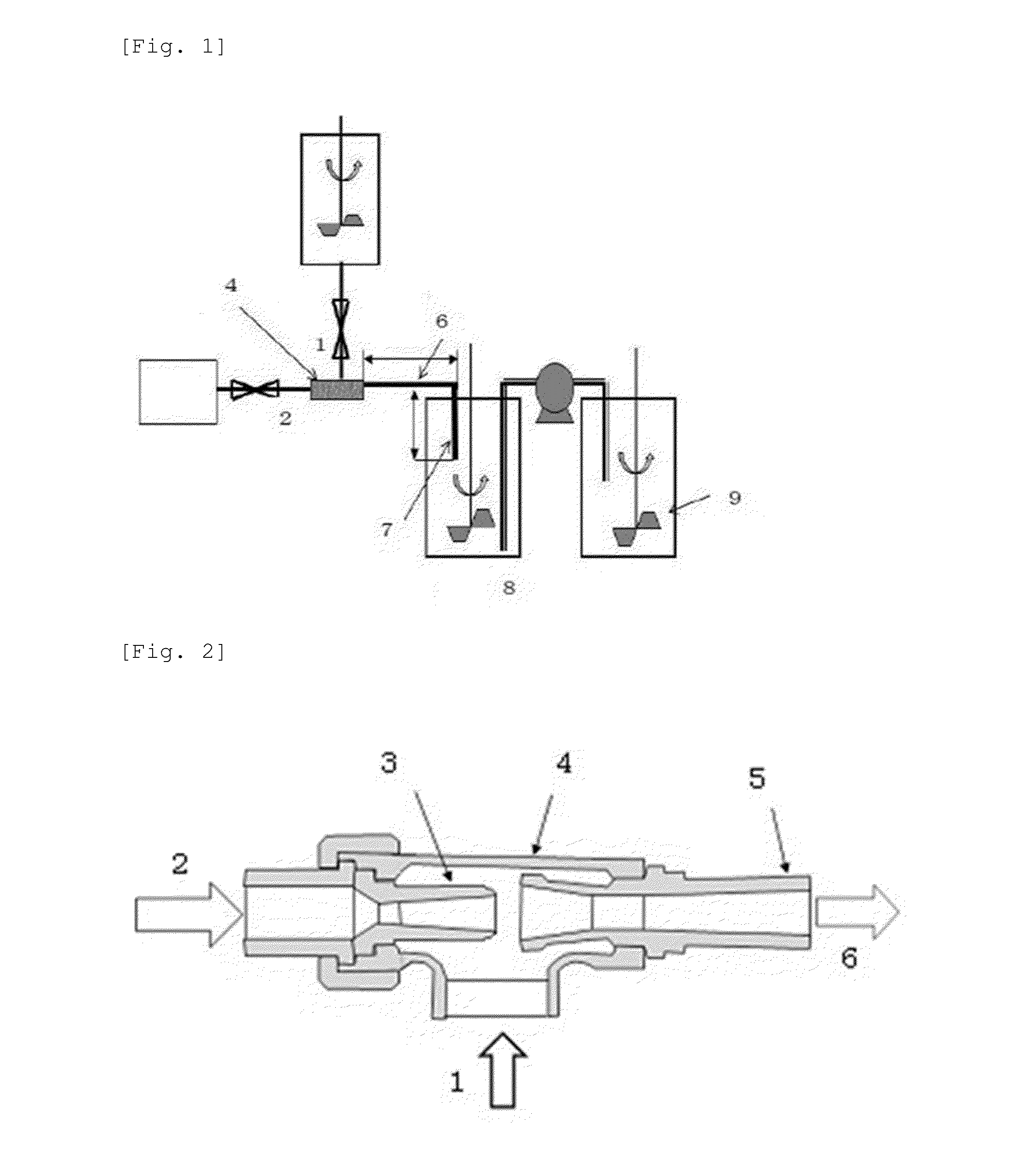Rubber composition comprising emulsion-polymerized conjugated diene polymer and silica suspension, and method for producing same
a conjugated diene polymer and silica suspension technology, applied in the direction of special tyres, transportation and packaging, tyre parts, etc., can solve the problems of difficult kneading, high cost, and restricted temperature condition of rubber kneading, and achieve high reactivity, high reinforcing characteristic, and stable quality upon vulcanization
- Summary
- Abstract
- Description
- Claims
- Application Information
AI Technical Summary
Benefits of technology
Problems solved by technology
Method used
Image
Examples
production example 1
[0122]Using a 100-L polymerization reactor, predetermined amounts of water, an emulsifier, styrene, and butadiene were charged in accordance with the polymerization recipe shown in Table 1 without using functional group-containing monomers. Thereafter, the temperature of the polymerization reactor was set at 5° C., and polymerization was initiated by adding an initiator, a molecular weight moderator and an electrolyte shown in Table 1 as radical polymerization initiator. When the polymerization conversion rate reached 60% after about 6 h, polymerization was terminated by addition of diethylhydroxylamine. Then, unreacted monomers were collected by steam stripping and a latex of the conjugated diene polymer was obtained. A portion of this latex was removed for analysis, coagulated with sulfuric acid and sodium chloride to form crumb. Then, this crumb was dried by a hot air dryer. Analytical values of the obtained copolymer are summarized in Table 2. The latex of the emulsion polymeriz...
production example 2
[0124]In accordance with Production Example 1, 3 parts by weight of methacrylic acid were added, and after properly adjusting the emulsion polymerization conditions, emulsion polymerization was performed similarly. The obtained emulsion copolymer was analyzed in a similar manner, and analytical values were also summarized in Table 2. The latex of the obtained emulsion polymerized polymer was indicated as “M-SB-L1.”
production example 3
[0125]In accordance with Production Example 1, 6 parts by weight of γ-glycidyl methacrylate were added, and emulsion polymerization was performed similarly. Analytical values of the obtained emulsion copolymer were also summarized in Table 2. The latex of the obtained emulsion polymerized polymer was indicated as “M-SB-L2.”
PUM
| Property | Measurement | Unit |
|---|---|---|
| particle size | aaaaa | aaaaa |
| temperature | aaaaa | aaaaa |
| pH | aaaaa | aaaaa |
Abstract
Description
Claims
Application Information
 Login to View More
Login to View More - R&D
- Intellectual Property
- Life Sciences
- Materials
- Tech Scout
- Unparalleled Data Quality
- Higher Quality Content
- 60% Fewer Hallucinations
Browse by: Latest US Patents, China's latest patents, Technical Efficacy Thesaurus, Application Domain, Technology Topic, Popular Technical Reports.
© 2025 PatSnap. All rights reserved.Legal|Privacy policy|Modern Slavery Act Transparency Statement|Sitemap|About US| Contact US: help@patsnap.com

